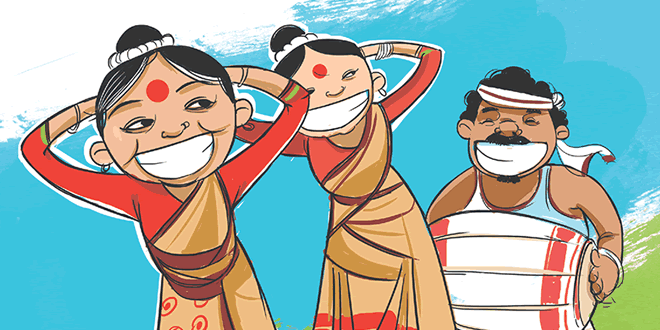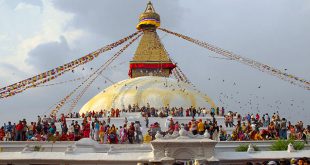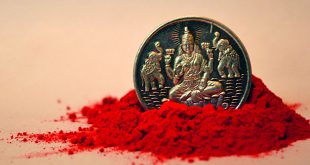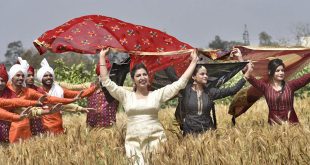Bihu dance is traditionally performed during the Bihu festivals in Assam. It is a beautiful form of folk dance.
Bihu Dance of Assam
The dance includes brisk dancing steps and rapid hand movements. This isn’t all; every dancer is dressed in beautiful traditional dresses and dance only to the beats of conventional musical instruments. The costumes the dancers wear while performing this dance are really colorful and help fuel up the spirit of Bihu. The males are dressed in beautifully clad dhotis, and gamocha. Dhoti is a long thin cloth tied to the waist to cover the lower torso of the men and gamocha is an adornment tied on the head. Both are embroidered with different patterns on both the corners. The women are dressed in traditional attire called Mekhela and Chador; Mekhela is cylindrical attire which is tied to the waist to cover the lower portion of the body and Chador is a drape which is used to cover the upper torso. A blouse is worn below the Chador. These dresses are made up of materials like muga silk, pat silk, cotton or bamboo cotton. Women wear gaudy jewelry and their plaits are filled with flowers that match the color of their attire.
The musical instruments used during the Bihu celebration are Dhol, Taal, Pepa, Toka, Baanhi, Xutuli and Gogona. Each instrument is necessary to produce the original traditional sounds and music. Dhol is a traditional drum made up of wood and animal hide, Taals are small metallic cymbals which are clapped together to produce high pitched sound, Pepa is a trumpet like instrument which is made out of buffalo horn, Toka are bamboo clappers, Baanhi is an Assamese flute, Xutuli is a musical instrument made out of clay or bamboo and Gogona is a jaw harp sort of instrument. These all instruments played together take the youth of Assam in a frantic frenzy of dance and rhythmic delusion. These are a few things without which Bihu dance will remain incomplete.
 Kids Portal For Parents India Kids Network
Kids Portal For Parents India Kids Network







